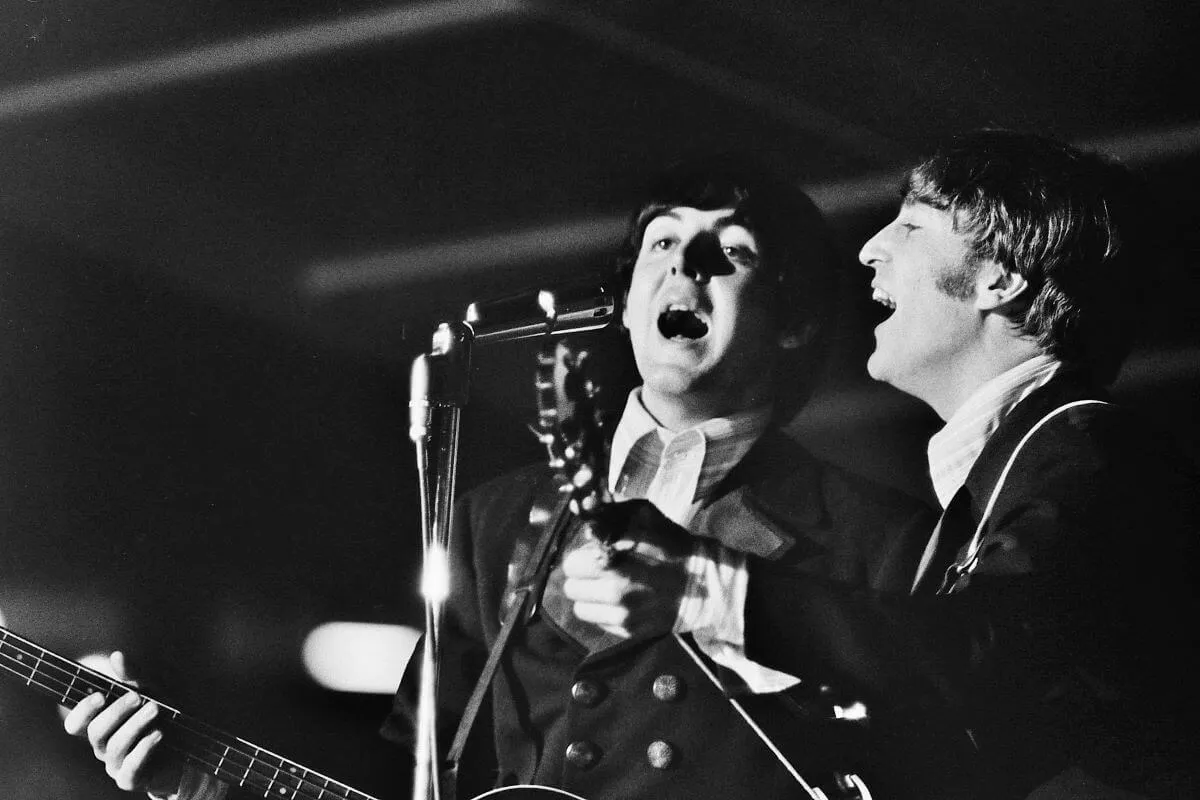The music world clamored for a Beatles reunion almost immediately following the group’s official breakup in 1970. When John Lennon died in 1980, that didn’t really slow the reunion fervor all that much, as folks hoped the three living members might once again play together on a live stage.
The Beatles Anthology project in 1995, which included studio recordings done by Paul McCartney, George Harrison, and Ringo Starr in conjunction with old John Lennon demos, was as close as we’d ever come to witnessing a full-scale Beatles reunion. But eight years before, two of the three remaining members came together on a stage for a good cause, as Harrison and Starr performed together at the Prince’s Trust benefit concert in 1987. It almost didn’t happen, though, simply because of how wary the two men were of raising everyone’s expectations that a more substantial reunion might be in the offing.
Coming Together for a Cause
The Prince’s Trust was started by Prince Charles (now King Charles III) in 1976 with the aim of helping young people who had fallen on hard times. Through the years, Charles utilized his good relationships with top British celebrities to help get the message out about the charity and raise funds.
In June 1986, a “birthday party” concert for the charity was held at Wembley Stadium, and it featured an all-star assortment of artists, including Paul McCartney. The event was such a success that another benefit concert was scheduled for the following year. In the wake of Live Aid just a few years earlier, rock and pop stars were certainly in the mood to participate in these types of events, since they could do a bit of philanthropy while also raising their profile.
Since they nabbed one Beatle the previous year, event organizers hoped to do one better in 1987. They invited both George Harrison and Ringo Starr to perform. As it turned out, the timing was right, but they made one crucial error that gave Harrison serious second thoughts about performing.
George Hesitates
George Harrison had always been the most reluctant to romanticize The Beatles and their achievements. He often expressed in interviews how stressful it had actually been at the center of the Beatlemania maelstrom. And he became frustrated at the public fixation with a potential reunion.
Although it’s never been confirmed, Harrison allegedly turned down Live Aid because Bob Geldof and company wanted a Beatles reunion in the vein of what Led Zeppelin did at the concert. But Harrison had good reason to show his face for the second Prince’s Trust benefit, which would actually be a pair of shows held on June 6 and 7 of ’87.
Harrison had an album in the can called Cloud Nine that would be his first LP in five years and was scheduled to be released toward the end of ’87. Since he was confident in the quality of the record, he wanted to give it as much chance as possible to thrive, especially since he was coming out of a period of inactivity with his music. An appearance at the Prince’s Trust concert would achieve that.
But Harrison almost backed out. He accepted the invitation to play, only to have Starr call him after the fact and say he’d also been invited. The event’s organizers hadn’t told Harrison this when they first asked them to participate. He felt like he was being backed into a Beatles reunion against his will.
Eventually, Harrison decided to stick to his commitment. Publicity for the event made no mention of the two Beatles. The audience the first night rocked out to an incredible lineup of performers that included Elton John, Eric Clapton, and Phil Collins, among many others. But when Harrison and Starr hit the stage, there was an eruption.
Harrison played both “While My Guitar Gently Weeps” and “Here Comes the Sun” with Starr behind him on drums, their first official live appearance together in 16 years. Starr then stepped to the mic to perform a rousing version of “With a Little Help from My Friends.”
Sadly, that didn’t mean that a more fully realized Beatles live reunion was in the offing. When the group was inducted into the Rock & Roll Hall of Fame in 1987, Paul McCartney, citing business differences with the other members of the group and John Lennon’s widow Yoko Ono, declined to appear. That essentially kiboshed the best opportunity for one more live performance by the three living Beatles.



